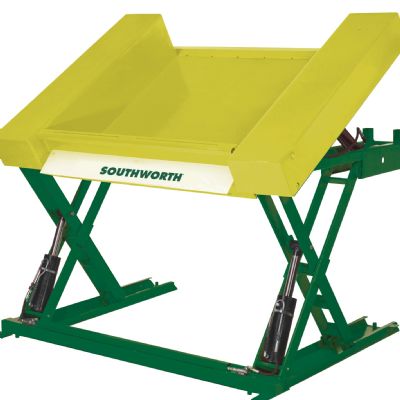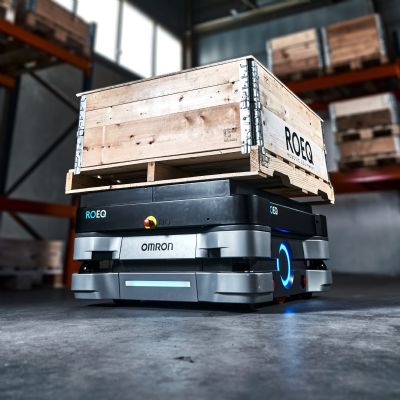“Again,” stresses Reak, “proper belt tensioning will eliminate many of the above-mentioned wear problems.”
And, check that the conveyor starts when production begins, as a stopped conveyor on a running production line leads to all sorts of headaches.
2. Consider the Application
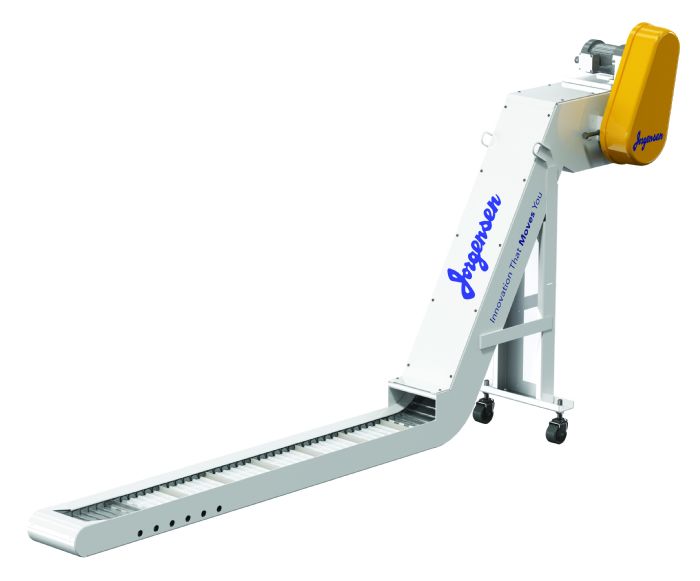 Choose the correct conveyor for the application to boost performance and productivity.
Choose the correct conveyor for the application to boost performance and productivity.
“While a normal hinged steel conveyor may work for an application, a conveyor specifically designed for the application can eliminate future problems and increase longevity,” Reak says. “Consider the size and weight of parts, chips or other scrap; volume; and dryness. Also consider material type. Aluminum, for example, may require different conveyor design features than high-carbon steel.”
Conveyor manufacturers offer solutions for the toughest applications, such as Jorgensen’s X-Treme Duty conveyors. Such systems feature robust construction with belts and drives catered to the specific materials to be moved. Hinged-belt, mesh and magnetic belts are options available from manufacturers to meet specific application needs, with various conveyors available with additional clearances between the belt and casing that allow for material to pass through without jamming.
The key here: Consult with your conveyor supplier when specifying equipment, and be ready with answers.
“We ask all kinds of questions related to the materials, volumes and more to arrive at the optimum solution,” says Reak. “This helps us determine belt options, ruggedness and more. Some of the higher-carbon steels cause a lot of wear and tear on conveyor components, so we need to know that. We also want to know if a user will require oil reclamation of liquid filtration, as that affects what systems and options to employ.”
Also, consider future applications.
“We want to know if a user might be using harder materials in the future,” Reak says. “It may be less expensive long term to install a heavy-duty conveyor now that can run the normal application with little wear and then transition seamlessly to tougher work. This is especially important for job shops that don’t know what might be running in the future or that must switch between a variety of applications.”
In some cases, belts can be switched out on the same conveyor case to handle tougher applications as needed. Other options for tougher applications include a hinged steel conveyor belt with a "pork chop" side-wing design from Jorgensen that delivers a flush, jam-resistant wall, Reak notes.
3. Achieve the Proper Layout
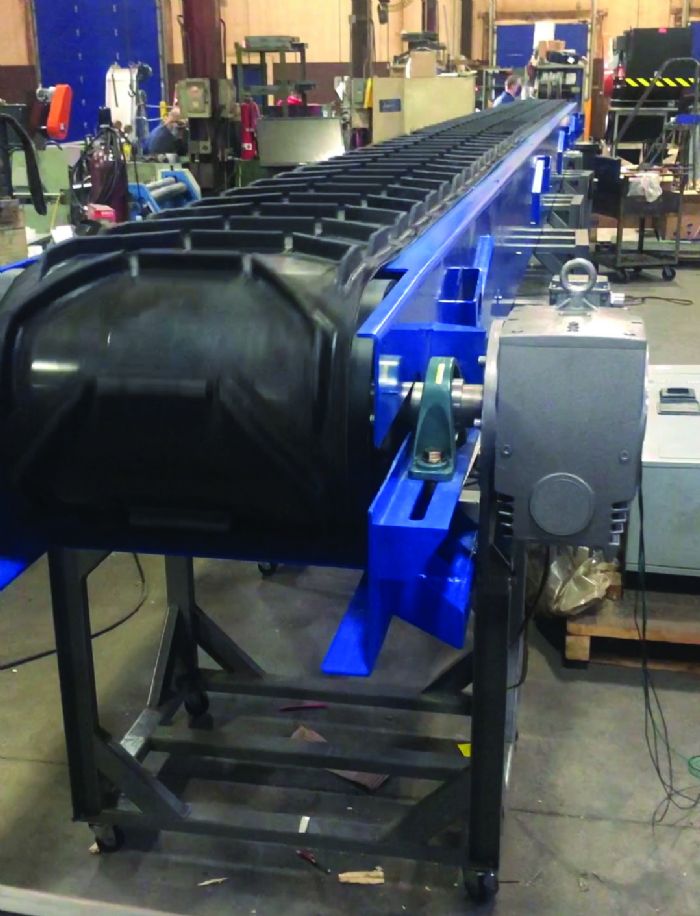 Ideal conveyor performance, even with the best system supplied for the application, requires an effective layout and setup. This includes proper cleat spacing, belt pitch, apron-plate style and incline for the application.
Ideal conveyor performance, even with the best system supplied for the application, requires an effective layout and setup. This includes proper cleat spacing, belt pitch, apron-plate style and incline for the application.
Part size determines cleat spacing, as the cleats hold material and enable orderly incline and decline movement.
“Cleat spacing for a 16-in.-long stamped part will differ quite a bit than for a 3-in.-long part,” Reak says. “The cleats must function correctly when the part reaches an incline. And, the cleats move closer to each other during the lower curve transition, so that must be accounted for to prevent jams.”
Also, pay heed to incline angles and discharge heights.
“Too-steep inclines may prevent the part from falling when it reaches the top, causing it to get stuck,” says Reak. “And, consider the discharge height, where parts or scrap fall off of the conveyor and into a bin.”
An excessive discharge height may cause damage to parts or lead them to bounce out of bins. Conversely, a discharge height set too low may lead to parts or scrap being pulled back into the conveyor as its underside contacts parts or scrap from filled bins.
4. Synch With Line Equipment
Options exist for tying conveyors into stamping or other production lines. For example, “we can incorporate a variable-frequency drive to automatically engage the conveyor when the line runs,” Reak says, “which helps in implementing lights-out operation. Also assisting with unattended operation: automated conveyor-health monitoring to reduce jamming and damage, and automatic clearing of scrap, dust and other items that can lead to jamming or excessive wear. And, we can integrate a sensing device that monitors conveyor rotation, which prevents piles of parts or scrap due to an inactive conveyor.” MF
See also: Jorgensen Conveyors, Inc.
Technologies: Pressroom Automation
 Lou Kren
Lou Kren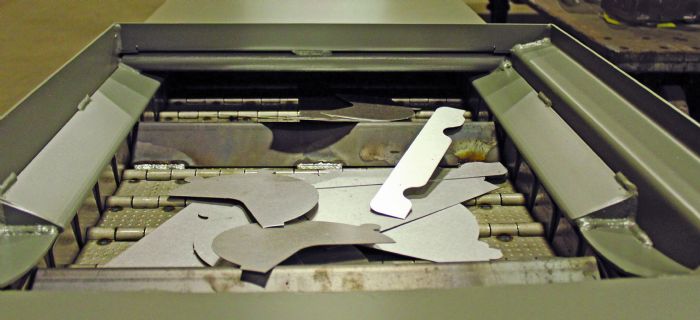 To ensure needed line productivity, conveyors must function in step with associated equipment and with processes upstream and downstream. Conveyor problems can shut down operations just as readily as press problems, but by following these four pieces of advice, conveyors dependably will move parts and scrap.
To ensure needed line productivity, conveyors must function in step with associated equipment and with processes upstream and downstream. Conveyor problems can shut down operations just as readily as press problems, but by following these four pieces of advice, conveyors dependably will move parts and scrap. 





 Choose the correct conveyor for the application to boost performance and productivity.
Choose the correct conveyor for the application to boost performance and productivity.  Ideal conveyor performance, even with the best system supplied for the application, requires an effective layout and setup. This includes proper cleat spacing, belt pitch, apron-plate style and incline for the application.
Ideal conveyor performance, even with the best system supplied for the application, requires an effective layout and setup. This includes proper cleat spacing, belt pitch, apron-plate style and incline for the application.